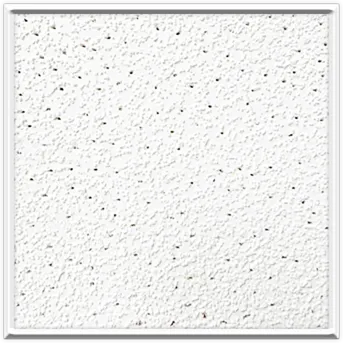Nov . 11, 2024 06:43 Back to list
pvc vs gypsum false ceiling
PVC vs Gypsum False Ceiling A Comprehensive Comparison
In the realm of interior design and construction, false ceilings have gained immense popularity for their aesthetic value and functionality. Among the various materials available for false ceilings, PVC (Polyvinyl Chloride) and gypsum are two of the most commonly used options. Both materials come with their unique advantages and disadvantages, making the choice between them significant for homeowners and builders alike. This article delves into a detailed comparison of PVC and gypsum false ceilings, examining aspects such as aesthetics, cost, durability, maintenance, and installation.
Aesthetics
When it comes to aesthetics, both PVC and gypsum false ceilings offer distinct looks that cater to different design preferences.
- PVC False Ceilings These ceilings are available in a wide range of colors, patterns, and finishes, including glossy, matte, and textured options. This versatility allows homeowners to create customized designs that match their interior décor seamlessly. Moreover, PVC can easily mimic the appearance of wood, stone, or even fabric, making it an attractive option for modern homes.
- Gypsum False Ceilings Gypsum, on the other hand, delivers a sleek and sophisticated look. It provides a smooth finish that can be painted or decorated in various styles. Gypsum ceilings are often used to create intricate designs like curves and shapes, offering a more traditional or elegant ambiance. The ability to achieve unique architectural designs makes gypsum a preferred choice for upscale residential and commercial projects.
Cost
Cost is a critical factor when deciding between PVC and gypsum false ceilings.
- PVC False Ceilings Generally, PVC ceilings are more cost-effective upfront. The material is readily available and often priced lower than gypsum. Additionally, the ease of installation can lead to savings on labor costs.
- Gypsum False Ceilings While gypsum ceilings may have a higher initial cost, they can offer better long-term value due to their durability and lifespan. However, potential homeowners should also consider the additional costs associated with painting and maintenance of gypsum ceilings over time.
Durability
The longevity and resilience of materials play an essential role in determining their selection
.pvc vs gypsum false ceiling

- PVC False Ceilings PVC is known for its resistance to moisture, mold, and termites. This makes it an ideal choice for areas prone to humidity, such as kitchens and bathrooms. PVC ceilings can last many years with little to no signs of wear and tear, making them a preferred option for high-moisture environments.
- Gypsum False Ceilings While gypsum offers a robust structure, it is less resistant to moisture and can be susceptible to mold growth in humid conditions. In areas where water exposure is likely, gypsum ceilings can deteriorate over time, leading to the need for replacements.
Maintenance
Maintenance is an essential consideration for long-term upkeep.
- PVC False Ceilings PVC ceilings require minimal maintenance. They are easy to clean with a damp cloth, and their resistance to moisture means they do not need special treatments to prevent mold or mildew. This low-maintenance characteristic makes PVC a convenient choice for busy homeowners.
- Gypsum False Ceilings Gypsum ceilings require more diligent care. They need to be periodically painted or treated to maintain their appearance and structural integrity. If damaged, gypsum panels may require professional repair or replacement, which can be time-consuming and costly.
Installation
Finally, the installation process can influence the choice of ceiling material.
- PVC False Ceilings The installation of PVC ceilings is relatively straightforward and can often be completed in a short time frame. Since they are lightweight and pre-finished, less labor is generally required, making them an appealing choice for quick renovations.
- Gypsum False Ceilings Installing gypsum ceilings can be more labor-intensive and requires skilled labor to ensure precision in complex designs. The drying time for joint compounds used in gypsum ceilings can also lead to extended project durations.
Conclusion
In conclusion, both PVC and gypsum false ceilings come with their own set of advantages and disadvantages. PVC is an excellent choice for those seeking a cost-effective, low-maintenance, and moisture-resistant option with a variety of aesthetic choices. Gypsum, while potentially more expensive and requiring more maintenance, offers stunning design possibilities and a classic look suited for elegant interiors. Ultimately, the choice between PVC and gypsum false ceilings will depend on individual preferences, project requirements, and budget considerations.
-
Durable Ceiling T Grid Systems | Easy InstallationNewsAug.29,2025
-
PVC Gypsum Ceiling: Durable, Laminated Tiles for Modern SpacesNewsAug.28,2025
-
Pvc Gypsum Ceiling Is DurableNewsAug.21,2025
-
Mineral Fiber Board Is DurableNewsAug.21,2025
-
Ceiling Tile Clip Reusable DesignNewsAug.21,2025
-
Ceiling T Grid Modular DesignNewsAug.21,2025







